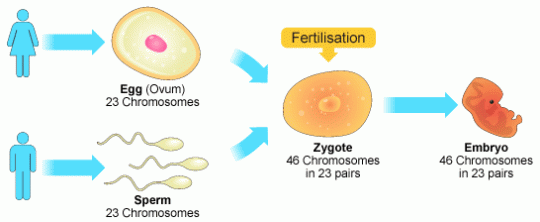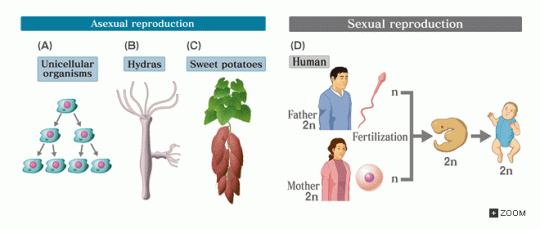Tagged: clone

Differences between Sexual and Asexual Reproduction: Grade 9 Understanding for IGCSE Biology 3.1 3.2
All organisms have the potential to reproduce. Reproduction is one of the 7 characteristics of life (8 if you study EdExcel IGCSE Biology…..) and of course it means the ability to produce new individuals. But over the 4 billion or so years life has been around on the planet, evolution has developed a myriad ways of producing new individuals. So as biologists are simple folk (well all the ones I work with are….), it makes sense to group different reproductive strategies together to make it easier to understand.
The major distinction between different ways of reproducing is to divide them into asexual and sexual reproduction. This works fairly well, although it seems to be a subject many GCSE students don’t understand too well. So here goes….
The first big idea to dispel is that the number of parents involved determines whether reproduction is sexual or asexual. Too often I am told that asexual involves one parent, sexual two. But although this works in most cases, sexual reproduction can happen with only one parent, for example in flowering plants that self-pollinate. So we need a different way of deciding whether reproduction is sexual or asexual.
And in fact a clear distinction does exist and it is to do with genetics. If the offspring produced are genetically identical to the parent (i.e. a clone) then it is an asexual form of reproduction. If the offspring produced are genetically different to the parents, then it is sexual.
Often sexual reproduction involves the process of fertilisation. This allows two parents to each contribute half their genetic material to their offspring thus generating individuals with new and unique genetic make ups. These specialised cells that contain half the genetic material are called gametes and as you all know, they are made by a special type of cell division called meiosis. Meiosis is vital for sexual reproduction as it produces cells that are haploid (one member of each pair of chromosomes) and all genetically unique.

So this diagram shows two humans each producing gametes by meiosis. The parents on the left will have 23 pairs of chromosomes and so each haploid gamete will have 23 individual chromosomes. Fertilisation restores the diploid number. Mitosis is then used to turn this single cell, the zygote into a multicellular embryo and then indeed into a new individual. (You will remember mitosis is a type of cell division that always produces genetically identical daughter cells)

The examples of asexual reproduction on the left all involve only this second type of cell division, mitosis. There are no gametes, no fertilisation and hence no genetic variation. The simplest type of asexual reproduction is shown as (A) and this is called binary fission. A single-celled organism can divide in two to produce two genetically identical daughter cells. Hydra (B) are a simple type of animal and they reproduce by budding. A new individual just grows off the side and when it is big enough, it drops off….. And many plants can reproduce asexually using a technique called vegetative propagation. The sweet potato plant in (C) can produce several offspring plants from each potato but as they are all clones of each other, this is definitely asexual reproduction.
Students do get confused with this topic so please ask me a question using the comment feature below the post. Keep revising hard!
